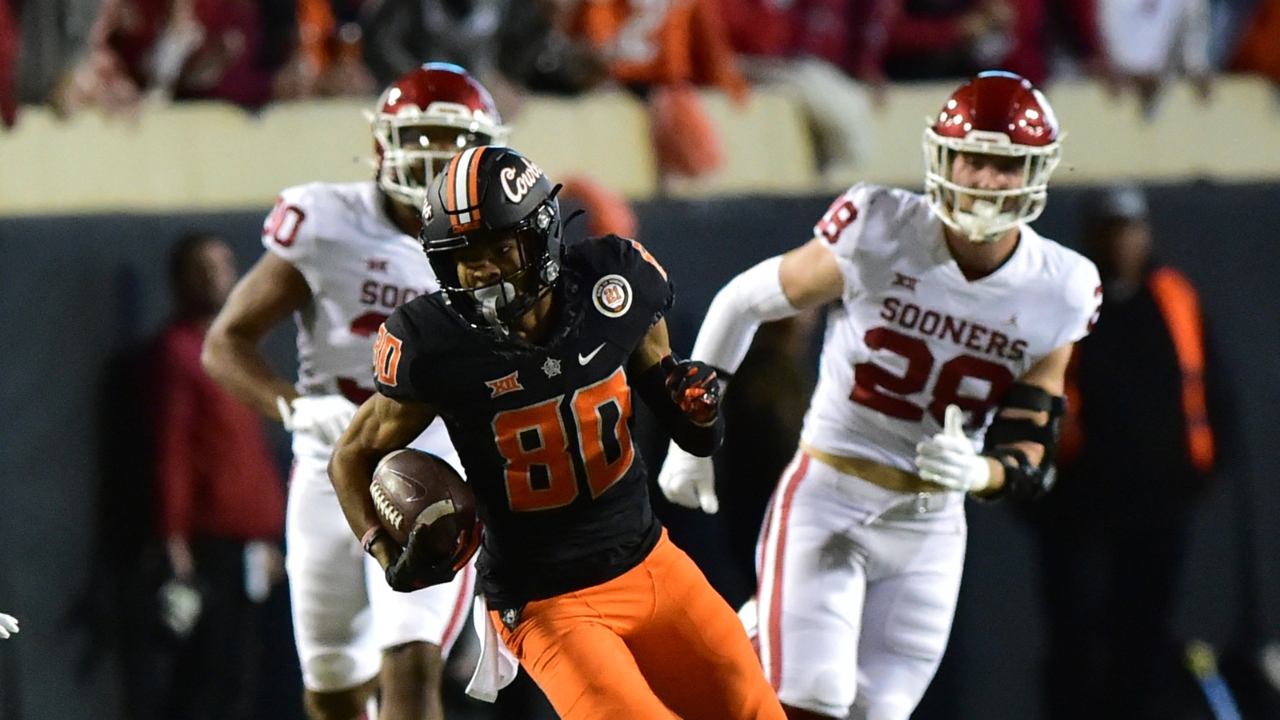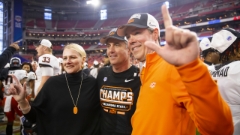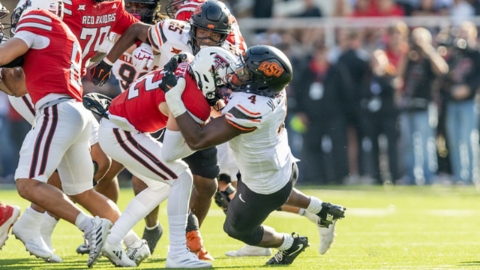The Concern is Not Gundy's Raise or the Economics of Cowboy fans, it's the Future

STILLWATER – I read the Tulsa World on Sunday morning and was drawn to Bill Haisten’s column on Oklahoma State athletics and that Haisten was seeing Oklahoma State’s athletic budget climbing toward the $100 million mark. The column begins with a series of quotes from former athletic director Mike Holder on the cost of doing business in major college athletics and, in particular, football.
The article then concludes that it is stunning that in the fiscal year 2022-23 that Oklahoma State athletics could come very close to a budget of that “magic mark” or $100 million.
Tulsa World column – April 10, 2022 – Unimaginable a Few Years Ago – OSU Getting Close to a $100 Million Budget
Now, apparently, OSU is on the brink of joining that club.
As the cost of doing business likely will never become less expensive, administrators at comparably funded schools like OSU, Texas Tech, Iowa State and Kansas State must feel a chill when they look at the future of Big 12 revenue distribution after OU and Texas have departed for the SEC.
I don’t know whether OSU’s 2022-23 budget might be $90 million or $99 million, but, wow, the cost increases of playing big-time ball are alarming. I’m concerned that some families — or maybe many families — soon may be forced to tap out.
You may want to start with the fact that Oklahoma State isn’t the only school and that in a report by the U.S. Department of Education in 2017-18 that there were already four schools with athletic department budgets over $100 million and two that were within $5 million of that total.
BIG 12
1. Texas: $184,373,919
2. Oklahoma: $157,594,460
3. TCU: $115,240,541
4. Kansas: $111,603,499
5. West Virginia: $98,851,233
6. Baylor: $95,214,007
7. Oklahoma State: $84,671,698
8. Texas Tech: $77,416,037
9. Kansas State: $76,414,388
10. Iowa State: $71,773,252

Mile Holder may have complained about the increasing cost of football, but the facts that new school president Dr. Kayse Shrum and athletics director Chad Weiberg have clear recognition of is that football, while the major economic engine of the athletic department is also the sport that matters with where your school and athletic department will be in the landscape of college athletics going forward.
More from Haisten and The Tulsa World column:
At a 2022-23 compensation figure of $7.5 million, Gundy is the Big 12’s highest-paid coach and one of only a dozen coaches nationally who are at or beyond $7.5 million.
In 2001, Les Miles made $400,000 as OSU’s first-year coach.
In 2005, Gundy was promoted to the head-coaching position and was paid $700,000.
At $1.1 million for the 2022 and 2023 seasons, new Cowboy defensive coordinator Derek Mason is OSU’s first million-dollar assistant.
All of these are true statements in Haisten’s column, but just as true is those other schools that pay their football coaches as much or more than Oklahoma State now pays Mike Gundy are powers or schools that want to be powers. Part of the coach’s salary equation is perception. It shows a schools commitment to football and being serious about it. In the world of have and have nots in the sport, that salary for the head coach proves commitment and expectations.
Top 10 Coach’s Salaries in College Football for 2022 Year and Season
Lincoln Riley, USC - $10,000,000
Nick Saban, Alabama, - $9,900,000
Brian Kelly, LSU - $9,500,000
Mel Tucker, Mich. State - $9,500,000
Jimbo Fisher, Texas A&M - $9,000,000
David Shaw, Stanford - $9,000,000
Dabo Swinner, Clemson - $8,500,000
James Franklin, Penn State - $8,500,000
Mario Cristobal, Miami (Fla.) - $8,000,000
Ryan Day, Ohio State - $7,600,000
On that list alone there are four coaches that you could easily argue have not achieved or won to the level of what Mike Gundy has at Oklahoma State, but forget that. There are six programs that have not won as much, as consistent, or experienced that kind of successful overall culture inside their football programs as Oklahoma State.
Gundy’s salary is earned, but it also makes a statement on the commitment and the expectations of where Oklahoma State University feels their football program is within the landscape of college athletics currently and for the immediate future.
Oklahoma State football has put the school and the athletic department in a very favorable position at a very critical time for conference and even organizational developments and possible radical change. Stability and strength in this climate are important.
More from Haisten and The Tulsa World column:
College football is so beautiful and so galvanizing for a fan base like Oklahoma State’s, but with regard to the cost of attending games and doing pregame tailgating while paying for parking and concessions — what are we looking at a few years from now?
Grocery and fuel prices being what they are, I wonder what the breaking point might be for OSU’s middle-class patrons.

Inside sources in Oklahoma State University athletics and the administration have told me that both Dr. Shrum and Weiberg have an excellent grasp on the school’s and the athletic department’s revenue streams and budget. Dr. Shrum is proving to be a vivacious fund raiser and Weiberg has surrounded himself with people that know how to both bring in money and then how to make it count and keep accounting accurate in the process.
Oklahoma State fans love their sports, all of them, but they have come around to realizing that just one sport brings in the major money and they are dedicated to keeping it healthy.
Oklahoma and Texas may have bigger budgets, larger revenue streams, and are moving toward a conference in the SEC that makes more than anybody. The questions Haisten asks about Oklahoma State University with a current financial rating of AA- (Fitch ratings) could be asked about the University of Oklahoma with a recently downgraded ranking of A+ (Fitch).
Oklahoma State has the money for its’ new football salaries and its’ major football projects. Oklahoma has been taking out loans for projects and the move to the SEC has been attributed by many to financial needs.
Not to seem insecure or combative, but Oklahoma State football and athletics are fine for right now. Their future depends more on conference security and stability with an eye to future conference membership and revenue and not as much as whether Oklahoma State fans will continue to support and agree with the initiative of putting football first. The reason is to have a chance for success in any and all of athletic ventures depends on that commitment and support.
Cowboys and Cowgirls fans definitely support and want that.




